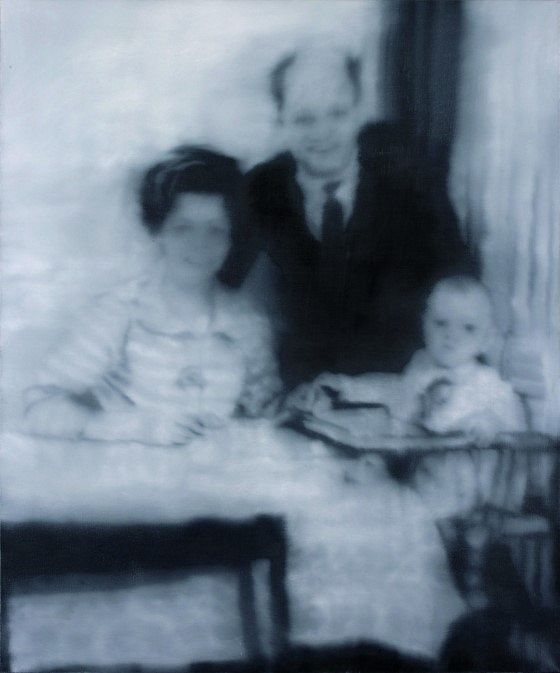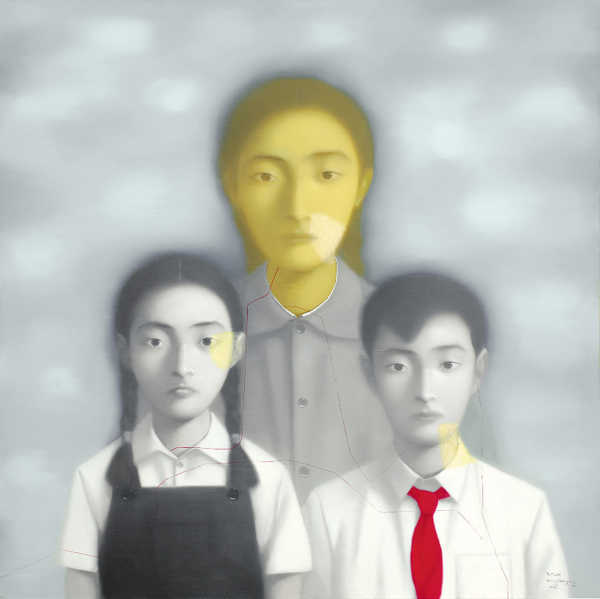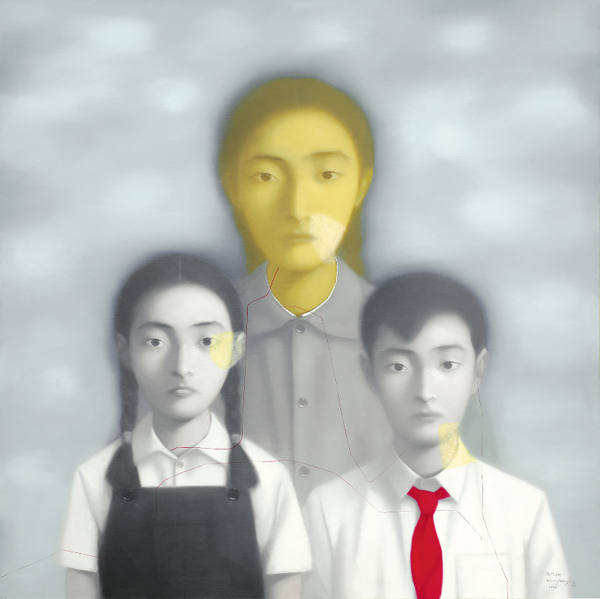Zhang Xiaogang, Family Portrait No. 13, 1998.
Estimate: HK$8,000,000 - 12,000,000
Lot 16, 20th Century & Contemporary Art Evening Sale, June 8.
Known for his unique and eerie family portraits, Zhang Xiaogang is widely regarded as one of the greats in contemporary Chinese art. In the late 1980s, he began working on the series that would make him famous.
Bloodline - Family Portraits is a series of portraits that reflect on the psychological impact of a turbulent period in Chinese history known as the Cultural Revolution. This season’s 20th Century & Contemporary Art Evening Sale includes an exemplar of this series: Family Portrait No. 13, painted in 1998.
One of a small number of Family Portraits executed on square canvas, this work is exceedingly rare and has never previously been offered at auction. It was last publicly exhibited in 1999 at the critically acclaimed Les Camarades exhibition at the Galerie de France in Paris. It was Zhang’s first solo show in Europe.
The late 1990s were a significant time in the artist’s career. It was only in 1998 that Zhang began to incorporate hints of a backdrop and engage with childhood imagery in his Family Portraits, differentiating this work from earlier paintings of the series. In Family Portrait No. 13, we see the culmination and refinement of the ideas that had consumed the artist for the past decade in a beautifully sensitive yet arrestingly earnest group portrait.
Zhang Xiaogang, Family Portrait No. 13, 1998.
Estimate: HK$8,000,000 - 12,000,000
Lot 16, 20th Century & Contemporary Art Evening Sale, June 8.
Family Portrait No. 13 invokes the studio portraits of the 1960s and 1970s in China, where families or work units typically sat or stood against a blank background and stared directly at the camera. These private portrats were to be taken according to a formula that satisfied an official sense of public aesthetics under leader Mao Zedong.
Zhang engages in this conflict between the inner and outer lives of Chinese people through his portraits. Working from his own family’s photographs, he draws from personal experience and uses his mother as the basis for all the figures in this series. The square canvas of Family Portrait No. 13 evokes the medium-format photography that was popular at the time.
The artist has also cited Gerhard Richter as an influence. In an exclusive interview with Phillips in April 2018, Zhang spoke about the way in which Richter used photographs as more than mere reference points to painting. “He saw their history and their meaning,” he said. Richter’s black-and-white photograph-paintings are imbued with a sense of reality and truthfulness. Despite their medium of oil on canvas, they play with the sharpness and blur of an actual photograph.

Gerhard Richter, The Wende Family, 1971.
Zhang’s Bloodlines serues catapulted the artist onto the international stage, attracting both critical and popular acclaim. In June 1994, four paintings from the series were exhibited at the São Paulo Biennale, a major feat for the artist.
The following year Zhang exhibited 13 large Big Family paintings at the Venice Biennale, marking the beginning of extensive international exhibitions and a distinguished and prolific career.

